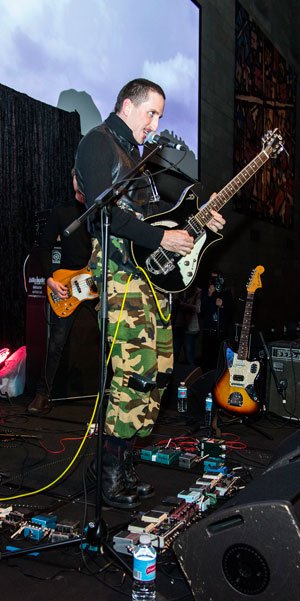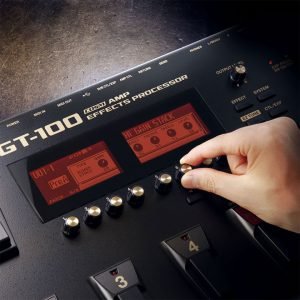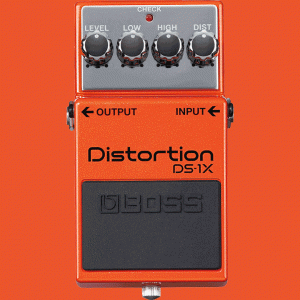Contributed by Greg Phillips for the Roland Australia Blog
Formerly a guitarist with independent Australian acts Mercy Arms and Jack Ladder, Kirin J Callinan has more recently built an impressive following both here and overseas for his own unique brand of music.
His debut album Embracism has received some extraordinary praise globally. The music press in particular, has been meerkat-like in their curiosity of his sometimes-confronting live shows. Greg Phillips witnessed the Kirin J live experience at his National Gallery of Victoria gig in late June and sat down for a chat afterwards.
THE BAND
I get the impression that singer-songwriter Kirin J Callinan needed to circumnavigate the world touring his music in order to truly find himself. Now that he’s back home, everything seems to be making sense. Speaking with Kirin backstage post-show at the National Gallery of Victoria, he’s explaining why things are suddenly falling into place. To begin with, he now has a local, solid new band he is content with. While overseas, Kirin was stressing out over finding the right people to play with for each new territory. Not that he was unhappy with the players he found, it was just the uncertainty of it all. “I had a bit of a rotating band,” he says. “In the US I did a tour with Tex, my brother on synth. I had a bass player by the name of Tim Koh, an American guy, beautiful man with long flowing hair like a horse’s main. He’s Ariel Pink’s bass player, who I toured with just over a year ago. I had a German fella on drums who I met in LA. In the UK, I had a different band again, an English drummer, another Australian on bass. It’s kind of stressful but I have a really good band here at the moment.” Adding to his life satisfaction is the fact that he flew straight into three appealing and interesting gigs; the APRA Awards at Brisbane’s plush city hall, Dark Mofo in Hobart, and tonight at Melbourne’s National Gallery. More than anything though, it’s Kirin’s musical vision which now has the most clarity, particularly in regard to the next record. “I’ve got a lot of songs and a lot of ideas about what they need to sound like, how they need to be presented outside of the recording itself,” he says excitedly. “I’m thinking a lot about it this time. I’ve learned a lot from this experience, this record. There’s still a lot of work to be done. Some songs are more complete than others.” He pauses with that look of someone reflecting on what’s just been said but knowing that he needs to elaborate.
EMBRACISM
“For this past record (Embracism), I probably wasn’t even thinking too much,” he continues. “It was just something I had to do. In all honesty, I was pretty deluded making the last record. At the time, it felt far and away the most focused thing I’d ever worked on. The irony in it was that I was completely deluded. I was recording songs and there was nothing more really to it. However, with my future music, I want people of all walks of life to enjoy it. I’ve been touring the world and having a great time but also slugging it out a bit down in the trenches, trying to make it work. I want to play to bigger and more varied audiences around the world. That might come across as having to water my music down but I think it is the opposite. I need to make it more extreme and more honed in to what it actually is. I reckon no matter what you do, if it is good enough and focused enough, and getting the message across, whatever that is, then people will get it. That’s my challenge.”
CONTROVERSY
Not only does Kirin challenge himself, but some controversial stage incidents during the past year or so have also challenged his audience. It’s surprising to Kirin that so many other artists don’t ask more of their audience. “It’s not like I’m thinking about it,” he says. “It’s still instinctual. It’s not a cerebral process for me, it’s like it just feels right, feels exciting, feels funny. It is hard to imagine why you wouldn’t want to provoke or evoke or present a new idea which by definition, will be challenging.” With the controversy, came a fair degree of negativity from some quarters. I wondered how that effected him personally. “It depends how negative,” he reflects. “I’ve been physically confronted before and that has shaken me up in the past. Generally though, and maybe this is the defence mechanism, if someone doesn’t like your music and really doesn’t like it, you just have to think, well … they just don’t get it. They’re an idiot (laughs). Then that will make me feel fine and if they love it, then I’ll think, well you obviously have fantastic taste and really understand where I’m coming from. So whether that’s true? Probably most of the time that people don’t like my music, they just don’t like it for whatever of their own reasons. So I just tell myself that and keep going.”
HIS SOUND
For those unaware of Kirin J Callinan’s sound, it’s a vibrant, electro-industrial flavoured form of pop-rock with nods and winks to Berlin-era Bowie, Scott Walker, Nine Inch Nails, Japan and Suicide … but that only explains some of the story. The mistake which most people make when listening to Kirin’s music is that it’s created by a bunch of synthesisers, when in reality it’s mainly Kirin, his guitar and the myriad of Boss effect pedals he uses on stage and in the studio. “That was one annoying thing … a lot of effort went into the guitar sounds on the album and it was always described as the synth-heavy ‘Halo’ (the opening track on the album) or people were just always talking about the synthesisers but ninety percent of it is guitar. Not that I should really get annoyed at that. I am happy that people are talking about it at all but making the guitars sound like synthesisers takes a lot of gear and a lot of thought.”
PEDAL SETUP
At tonight’s gig, Kirin was using 17 Boss effects pedals, an amount of gear he swears he requires to be able to reproduce the tracks from ‘Embracism’. “The Slicer pedal, the SL-20. The RV-5 reverb, the twin, DD-20 Giga Delay,” he says as he begins to list the Boss pedals which are most prominent in his music. “The Boss tuner makes a big appearance on every song,” he continues. “The main ones are beautiful, the reverb … and not just for the big reverb sounds but a lot of them are sharp and gated and cut-off, harsh sounds, that sound like some sort of nasty distortion rather than reverb. The pitch shifters as well, that’s the sound on ‘Embracism’ that people always mistake for synthesiser.”  Before creating the final studio recording of ‘Embracism’, Kirin had already made a completely different recording of the same collection of songs. However, the only remnants of that first recorded version appear as the percussive intro to the album. “That was one of the few relics left over from that first attempt at creating what became ‘Halo’,” he says. “It was called something different, not ‘Halo’ but something abstract. That was a snippet from the original jam but that was the Slicer pedal too. A bunch of things being fed into the Slicer but me, the guitar and the Boss Slicer.” For the track ‘Landslide’, the Boss RV-5 digital reverb pedal was the obvious hero. “We used an Eventide reverb a little bit as well but mainly it was the Boss RV-5 pedal.” In fact the entire recording and stage show is virtually a festival of Roland and Boss gear with Kirin’s brother using the new Roland Gaia keyboard and Kirin amplifying his guitar through a Roland amp. “We use the Roland JC-120 amp as well and did so on the recording too,” confirms Kirin. “We recorded it all di and re-amped it.” Also contributing piano to the tracks ‘Landslide’ and ‘Victoria M’ was Kirin’s father Brendan, former keyboard player with 80s rockers The Radiators. “You know what, he played on ‘Landslide’ and did it all in just a day,” Kirin says proudly. “He insisted on bringing his Roland digital piano, the white one, the FP80. He’s a great piano player and smashed it out pretty quickly,” replied Kirin when I asked about how many piano takes were required.
Before creating the final studio recording of ‘Embracism’, Kirin had already made a completely different recording of the same collection of songs. However, the only remnants of that first recorded version appear as the percussive intro to the album. “That was one of the few relics left over from that first attempt at creating what became ‘Halo’,” he says. “It was called something different, not ‘Halo’ but something abstract. That was a snippet from the original jam but that was the Slicer pedal too. A bunch of things being fed into the Slicer but me, the guitar and the Boss Slicer.” For the track ‘Landslide’, the Boss RV-5 digital reverb pedal was the obvious hero. “We used an Eventide reverb a little bit as well but mainly it was the Boss RV-5 pedal.” In fact the entire recording and stage show is virtually a festival of Roland and Boss gear with Kirin’s brother using the new Roland Gaia keyboard and Kirin amplifying his guitar through a Roland amp. “We use the Roland JC-120 amp as well and did so on the recording too,” confirms Kirin. “We recorded it all di and re-amped it.” Also contributing piano to the tracks ‘Landslide’ and ‘Victoria M’ was Kirin’s father Brendan, former keyboard player with 80s rockers The Radiators. “You know what, he played on ‘Landslide’ and did it all in just a day,” Kirin says proudly. “He insisted on bringing his Roland digital piano, the white one, the FP80. He’s a great piano player and smashed it out pretty quickly,” replied Kirin when I asked about how many piano takes were required.
WHAT’S NEXT?
Fortuitously, Kirin has been surrounded by gear all of his life and it wasn’t too much of a stretch to suggest he’d always end up in music “I’m lucky that I have the gear to play with,” he says “I kind of started to approach that before I could even play an instrument, so maybe the way I use it is unique. Some songs like ‘Halo’ and ‘Embracism’ and ‘Stretch It Out’, started out as instrumentals and were just inspired by the gear. I’d plug in a bunch of things, start playing and it makes a sound. It sounds like a song already. You plug enough gear into each other and it fills up the whole space and there’s a song. You jam it out and then when the lyrics finally come, it might be 6 months down the track. But also, you can’t give the gear all the credit because no two people sound the same with the same piece of equipment. A lot still has to come from yourself.” The rest of 2014 will see Kirin knuckle down and deliver the next album, which has been financed by a successful crowd funding campaign. “That was my last official show done,” Kirin says of tonight’s National Gallery gig. “I have one more in Paris in two weeks, in which I am playing at a wedding. And I got an email from a gay couple who are getting married in Birmingham. I don’t know them but they emailed to say they are really big fans and asked if they could buy something unique from me. I’m going to be in England when the wedding is on so I might just go to the wedding and play a few songs. So apart from weddings … maybe there will be more if you are reading this? (laughs) The rest of the year is weddings and finishing the record. I want this next record to invite a whole heap of people into my world. It’s going to take a lot of work but I aim to be as ambitious as possible with it. I’d like to be playing to 10,000 beautiful people in Ibiza with the next record, that’s the plan.” https://www.facebook.com/KirinJCallinan http://kirinjcallinan.com/













